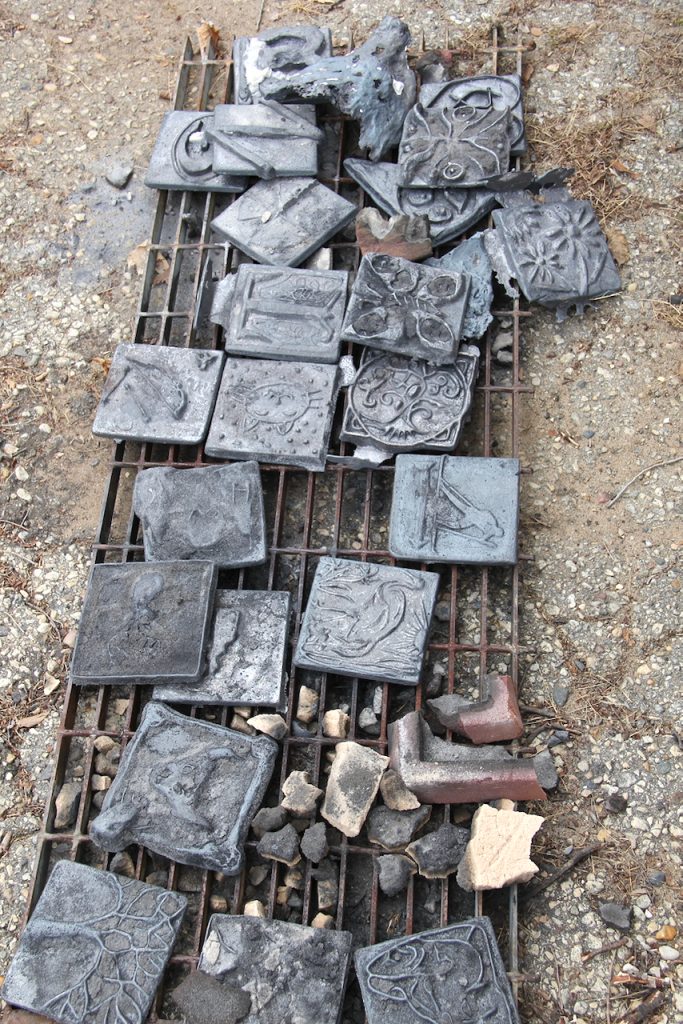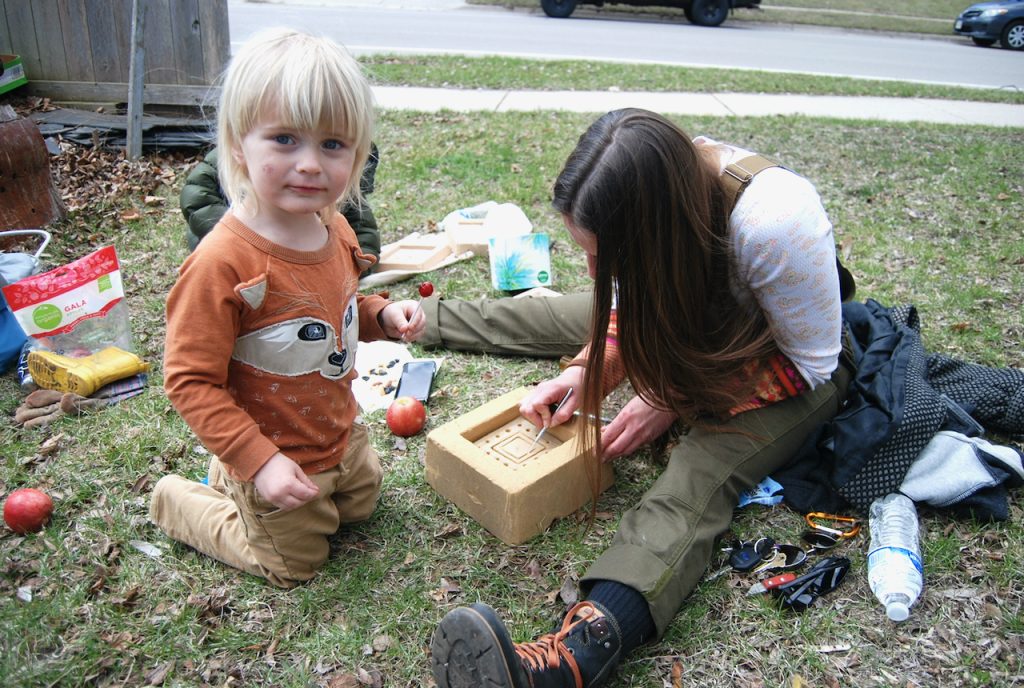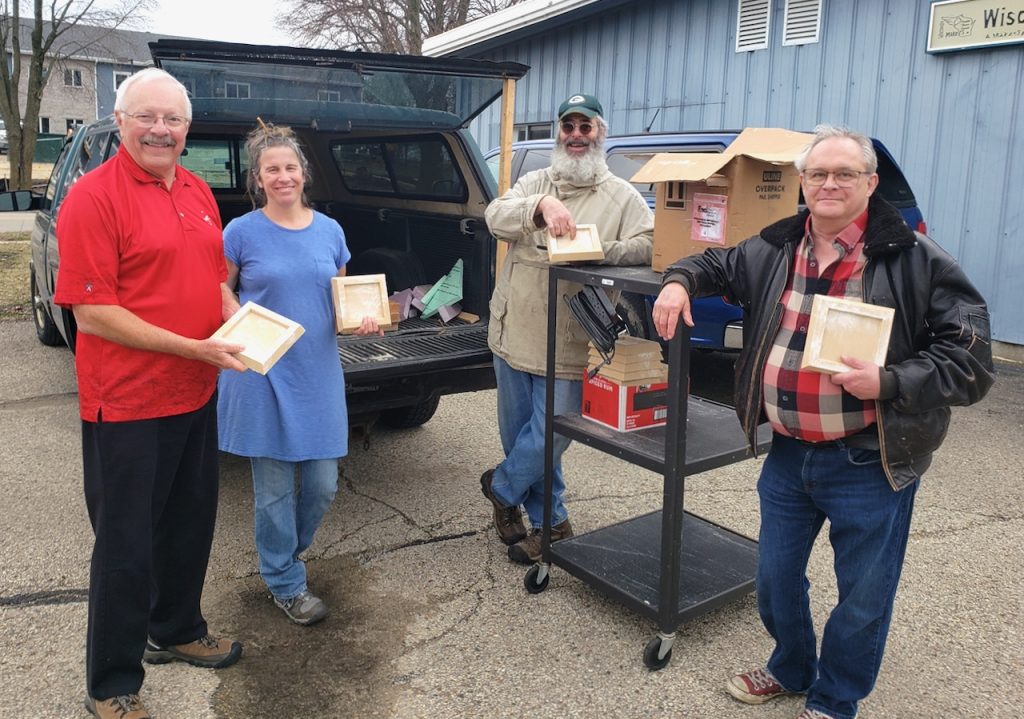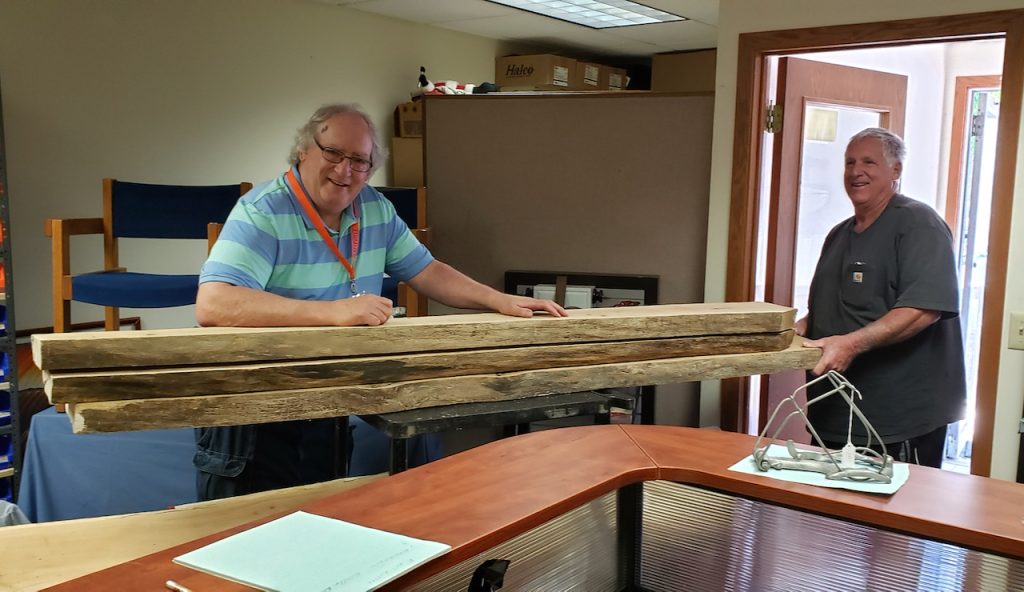By Kim McDarison
In 2016, when Pete Spangler, then a Fort Atkinson resident and president of the nonprofit group Wisconsin Makers, Inc., purchased the former Whitewater Register newspaper building on Clay street in Whitewater, he had a vision of turning the building into a place where inventors, tinkerers and crafters could come together, use equipment provided by the organization, and envision and make things.
The experience was meant to use a “collaborative and educational approach to creativity,” according to information found on the Wisconsin Makers website.
Responding to questions about the Wisconsin Makers concept in 2017, Pete said that after he established the workshop, he met with University of Wisconsin-Whitewater Art Department metal studio instructor and co-owner of Wisconsin-based Cowyard Studio Teresa “Tree” Lind and together, in 2016, they organized an iron pour.
The event brought students and community members together to explore the creative process of making a one-of-a-kind iron tile from scrap cast iron materials.
Since that inception, the Wisconsin Makers spring iron pour has become an annual event — albeit with a pause taken in 2020 and 2021 as a COVID-19 precaution — attracting in some years, according to its organizers, as many as 100 participants and spectators to the day-long activity.
Making a tile
For those interested in making a tile, the process begins with a 5- by 5- by 1-inch block, which combines sand with a binding agent. The block is designed to allow an artist to easily scratch a design that can next be filled with molten iron.
To create the molten iron, Lind, throughout the year, collects discarded items made of cast iron that can be cut into what she described as “Dorito-sized” chips. The chips are next loaded into a specialized melting device called a cupola furnace.
As the iron melts, it is removed from the furnace and transported by a two-man team in a device called a crucible, and poured into the individual molds.
The full iron pour process requires the assemblage of an iron pour team which, in past years, has been comprised of as many as 10 members. Team members include Lind’s fellow artist friends, University of Wisconsin-Whitewater metal studio students, and graduates and past students involved with the UW-Whitewater metal studio program. Clad in specialized gear to protect them from the heat, team members load the cupola, fill the crucible, and move the iron between rows of waiting scratch molds into which they pour the molten material.
After the iron cools in the molds, members of the team remove the tiles from each mold, set them aside for further cooling, and, once they are cool enough to touch, grind away rough edges before presenting them to their creators.
Individuals of all ages and artistic abilities, who are cordoned for safety from the active pour area, eagerly await completion of the process and the presentation of their piece.
During the process, team members, many of whom have participated in other iron pours, gain experience in learning about the different jobs assigned to members of an iron pour team.
The captivating and fiery process has annually attracted large groups of participants and spectators, organizers have said, many of whom stay for the day, visit with fellow participants and tour the Wisconsin Makers facility.
The day is complete with food available for purchase.
Pete died in March of 2022. That year, the event was organized by Wisconsin Makers, Inc., members and Pete’s wife, Chris, and was attended by members of the Spangler family.
The event will once again take place Saturday, April 15, at the Wisconsin Makers building, 200 E. Clay St., Whitewater, with activities beginning at 9 a.m.
A shop teacher’s vision
Offering insight, in 2017, into his makerspace vision, Pete said things fell together when he and Chris purchased the 5,000-square-foot building, which they dubbed the “Whitewater Manufactory.”
Before the couple purchased the building, Pete said he was already working with the makerspace concept from a location on Bluff Road in Whitewater.
Offering some history about the Clay Street building, he said it had formerly served as the headquarters of the city’s newspaper, the Whitewater Register, which was then locally owned. The paper was later purchased by Southern Lakes Publishing, which, today, has headquarters in Delavan.
Pete said that the interior of the building had been remodeled to include office and warehouse space some 18 years prior to 2017, noting that the structure was built in 1975.
Recalling his own life’s journey, in 2017, Pete said he had retired from his career two years earlier, which had included time spent as a high school shop, engineering and tech program teacher, and began operating the makerspace program in Whitewater.
According to his obituary, Pete earned a bachelor’s degree in technology education with an emphasis on metals from the University of Wisconsin-Platteville in 1979 and later a master’s degree from UW-Stout in Menomonie. He also was a licensed journeyman/master machinist and tool-and-diemaker and was certified in quality engineering and assurance.
As a teacher, early in his career, he taught metals at Mayville High School, and, during the 1990s, after exploring work as a machinist, he returned to teaching for 18 years, during which time he spent eight years teaching technology and engineering, overseeing the student apprenticeship program and advising the FIRST Robotics team at Mukwonago High School.
Additionally, his obituary noted, he taught at Jefferson, Lake Mills and Beloit high schools, and was a full-time metals instructor for two years at Waukesha County Technical College in Pewaukee and a part-time instructor at Madison Area Technical College in Fort Atkinson.
With the purchase of the building on Clay Street, Pete said, for him: “Things just fell into place.”
In 2016, when the Spanglers took possession of the building, he noted, the place was in “bad condition.”
While the newspaper no longer operated from the location, Pete said the building was never abandoned.
“There was always something going on it here,” he added.
By 2017, Pete had filled the space with myriad equipment which he said he hoped would inspire creators to become members of the makerspace, a place where they could meet other members and work to develop their business and hobbyist ideas.
During the iron pour held in 2017, Pete enthusiastically greeting members of the public as they wandered through the various shops within the building and learned about the makerspace concept and equipment.
Describing the concept, Pete said a makerspace was “a grassroots movement,” which, he noted, “was unusual” for a smaller city like Whitewater.
Still, he said, he was committed to the project, stating: “I live and die for equipment.”
Schedule of events
This year, iron pour event-goers arriving at 9 a.m. can begin the day by making a scratch block.
According to information released by the Wisconsin Makers organization, the per-person cost for members of the general public to obtain a block is $25; a cost for Wisconsin Makers members is $15. Blocks are available on a first-come, first-served basis.
Artists must complete their blocks by 11:15 a.m.
Blocks will next be assembled for pouring, which will commence at noon.
Artists can anticipate receiving their finished tiles by mid-afternoon, the release stated.
Scratch mold workshop
In addition, a workshop will be available for those interested in creating their scratch mold in advance of the iron pour.
The workshop will be held Friday, April 7, from 4:30 to 8 p.m., at the makerspace building on Clay Street.
Artists also may purchase a block at the workshop and work on it at home.
About Wisconsin Makers
According to information released by the organization, Wisconsin Makers is a nonprofit regional “makerspace,” defined as a community workshop, offering an affordable, collaborative and educational environment that inspires people of all ages to become innovators by unlocking their skills through continual experimentation and training. Work areas/equipment include: 3-D printing, laser engraving, machining, welding/fabrication, electronics, blacksmithing, woodworking, ceramics/pottery, jewelry making, arts/crafts, quilting/fabric arts, and matting/framing, among others.
For more information on the iron pour or scratch mold workshop, or to learn about the makerspace or memberships, visit the organization’s website: http://wisconsinmakers.org or contact Wisconsin Makers President Al Jewer by phone: 630-430-9498.

Members of the iron pour team fill molds with liquid iron. File photo/Kim McDarison.

Tiles made by iron pour participants in 2017 wait to cool. The tiles will next receive a wire brushing and edges will undergo grinding by team members to remove sharp edges before they are presented to their creators. Contributed photo.

A mother and child work on their scratch block during a previously held iron pour. Kim McDarison photo.

Wisconsin Makers Treasurer Ron Binning, from left; Teresa “Tree” Lind, art lecturer at the University of Wisconsin-Whitewater and iron pour team leader and organizer of the Sixth Annual Spring Iron Pour; Wisconsin Makers member Kent Taylor, and Wisconsin Makers President Al Jewer unload scratch blocks in advance of a workshop scheduled for Friday, April 7, at the makerspace, 200 E. Clay St., Whitewater. Contributed photo.

The late Pete Spangler, at left, helps load wood collected at the Wisconsin Makers building in Whitewater. Contributed photo.
This post has already been read 1544 times!
